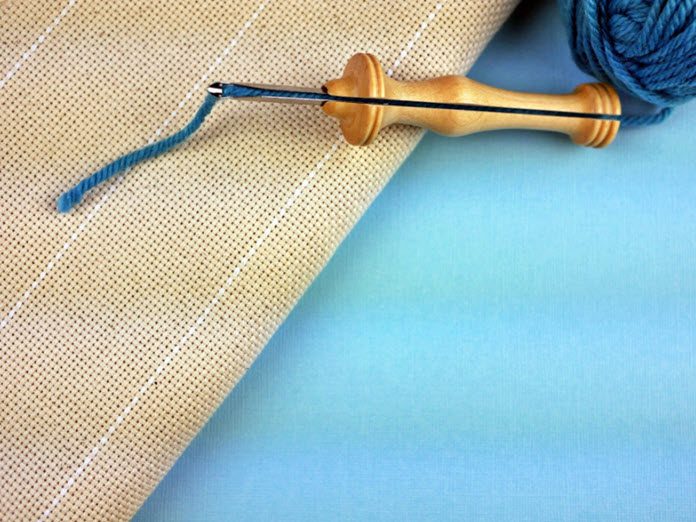If you are into fabric crafting, you may have heard of monk cloth. It is a loosely woven yet durable cotton fabric that can be used for wear or décor, or serve as the base for weaving, hooking, or needle crafting.
It’s so-called because it was first used to make habits for monks. It has since gone on to be integrated into a variety of uses.
This article will discuss monk cloth so you can learn more about this versatile fabric.
What is Monk Cloth?
Monk cloth is a durable cotton fabric that features the following characteristics.
- Coarse:
The cloth tends to be coarse although high-quality fabrics will be smooth to the touch.
- Durable:
The fabric has thread running through it to make it a more durable option.
- Cotton:
Most of this kind of cloth is 100% cotton although there are linen varieties.
- 4×4 Weave:
The cloth is made by passing 4 weft rows under 4 warp threads. This process produces a checkered pattern. It also makes the fabric loose and even, which is an ideal texture for a needle to pass through.
- Drapes Nicely:
The material is not too stiff or too light. It offers an ideal balance that allows it to drape well when incorporated into clothing and interior designs.
What to Look for in This Fabric
- Organic:
In today’s environmental climate, it’s always best to buy organic. Most of this kind of cloth is 100% cotton which makes them inherently organic. However, it can lose this quality if it’s been treated with pesticides or chemicals, or if it’s been genetically modified. The same applies to linen.
- Thread Count:
The fabric’s thread count has a direct relationship to how many holes are in it per inch. The hole content will determine how many stitches you can incorporate into each inch of the material. It’s ideal to choose a fabric with 12-13 holes per inch. However, preferences will vary depending on the needle you use and the project you are working on.
- Pre-Washed:
The fabric may shrink when it’s washed. It’s best to get a pre-washed material to ensure it retains its size.
- Stretch Factor:
It’s advisable to find cloth with a good amount of stretchability. This factor ensures it will stretch easily over a hoop or frame.
What Can the Fabric Be Used For?
Needle Crafting:
The cloth is soft, stretchy, and durable so it can easily stretch over a frame. The weave allows a needle to slide through seamlessly while holding the threading in place. The fabric is also highly resilient so it will maintain its shape. Its durability also means you can pull threads in and out as often as you like making it the perfect needle-craft beginner base.
Afghans:
Afghans are blankets or shawls that are knitted or crocheted. They are typically heavy, but monk and some other kinds of cloths offer an ideal durable base.
Swedish Weaving:
This is a type of embroidery-like weaving. It involves weaving yarn or floss under raised floats on a woven fabric to create a design. Also referred to as huck weaving. It is used to create various patterns that can be applied to table covers, placemats, Afghans, and throws.
Rug Hooking:
This process involves threading pieces of yarn through a woven material using a hook to create a rug. The fabric’s durability and loose weave allow the hook to pass through easily and keep the yarn in place.
Upholstery and Drapers:
Because the cloth is durable, it makes the perfect base for upholstery and drapery. Its weave opens the door to a variety of decorative options.
Care Tips
- Hand Wash:
For best results, hand wash the fabric using a mild detergent. Avoid using bleach and other harsh chemicals. Dry cleaning is not advisable.
- Dry Flat:
The fabric may not hold up well in the dryer. Lying it flat will maintain the texture and weave.
- Use a Low Setting When Ironing:
The fabric can be ironed but on a low setting only.
Monks’ cloth is an ideal option for crafts, clothing, and décor. It is durable, yet its open weave allows for various decorative weaving and embroidery methods. How will you be integrating it into your crafting?


